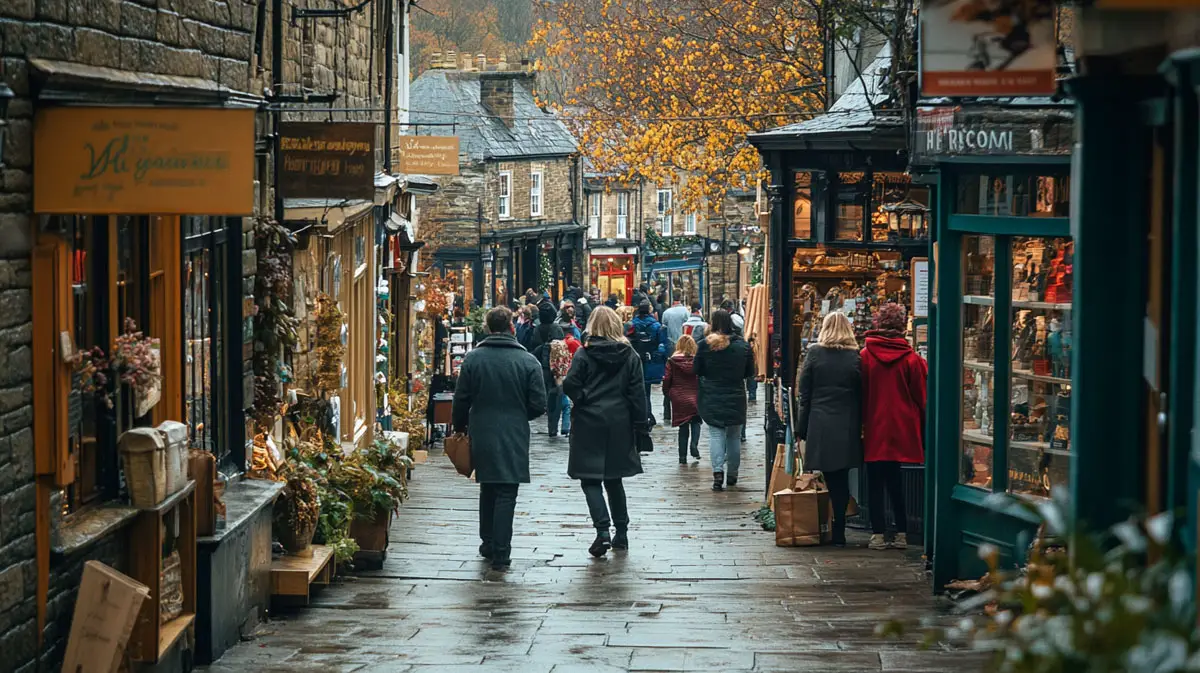The Decline Of The Yorkshire High Street: Is There Still Hope Of Regeneration?

It’s where many of our parents and grandparents would gather to meet friends and neighbours, sharing the latest gossip while picking up their weekly essentials. Once a staple of Saturday mornings, the ritual of “going to the shops” – browsing the racks, stopping for a natter, maybe treating yourself to a fresh loaf or a paper – has lost its sparkle for many of us.
The handiness of online shopping, the convenience of retail parks, the sheer drudgery of having to find a parking space in town and our increasingly hectic lives mean that what was once a staple outing has become more of a chore; sadly now often reduced to a hurried click of a button or a rushed supermarket dash.
We are all guilty of it to some degree. There’s so much ease to online shopping, so many of us have stopped wandering down the high street. Instead, come payday, we’re dooming scrolling through Amazon Wish Lists from our comfy sofas in our dressing gowns.
Online casinos have made it far more convenient to enjoy a game without stepping out the door, replacing the lively buzz of a physical casino. The increase behind the popularity of these, as many online independent casinos explained, is “[these] sites provide fresh gaming experiences that traditional casinos often lack.”
Even meals have become just a quick delivery away: takeaways now arrive straight to the door with the tap of an app in as little as 10 minutes, so we are even cooking less, and there’s a sharp decline in how regularly we eat in restaurants, too.
The North East, in particular, has continued to see a significant number of shop closures, although the rate of closures has slowed in recent years. In the past year, the region witnessed 471 closures and 349 openings, resulting in a net loss of 122 stores.
Take Bradford, for example. Bradford’s high street has suffered significantly from the cost-of-living crisis, with many local businesses closing down due to rising rents, energy costs, and, of course, COVID-19’s impact. Long-established shops are now struggling to survive. And yet, somewhat paradoxically, Bradford is the UK’s City of Culture in 2025. If council projections are correct, is expected to bring millions of visitors and much-needed investment.
Huddersfield has also experienced a massive decline in its high street’s vibrancy. Over recent months, numerous businesses have shuttered, leaving multiple vacant units. Establishments such as bars, a brewery, and even a KFC outlet have closed, contributing to a “thoroughly depressing” atmosphere. Contributing factors include elevated rental costs, coupled with issues like anti-social behaviour, deterring shoppers.
There are, however, a few beacons of light throughout Yorkshire, which show that hope remains for the humble Great British high street. Bawtry, sitting in South Yorkshire, proves this point more than most.
Rather than relying on big chain stores, the market town, which lies some 16 miles southeast of Doncaster, has built a strong community-driven high street loaded with charming independent boutiques, fashion retailers, and an ample selection of restaurants.
What really sets Bawtry apart, though, is its community spirit. Events like food festivals, seasonal celebrations, and local markets keep people coming back, proving that a successful high street isn’t just about what’s on sale – it’s about creating a place people genuinely want to visit.
Known for its connection to the Brontë sisters, Haworth has capitalised on its literary heritage, bringing 70,000 visitors from around the world to the Brontë Parsonage. However, it’s also invested well into its high street to encourage literary fans to part with their cash in the high street and not just the museum bookshop.
Haworth’s high street is a blend of independent shops, quaint cafes, and boutique shopping, all set in a traditional cobbled street, perfect for encouraging people to wander and explore the (unforgivingly steep) Main Street. Regular events, such as literary festivals, seasonal markets, as well as the annual 1940s weekend, keep the village vibrant and draw in a diverse range of visitors.
If more towns follow the lead of the likes of Bawtry and Haworth, Yorkshire’s high streets could have a much brighter future than we might think.
The importance of face-to-face interactions (even in an increasingly digital world) can’t be underestimated. In reality, we all still crave those experiences that allow us to pull ourselves away from our screens and get into some real-world environments – and local high streets can offer just that.
For many Yorkshire towns, the answer to high street struggles may not lie in fighting against online shopping or the retail giants but in finding ways to coexist. It’s about carving out a niche, offering something unique, and reconnecting with the local communities that rely on these spaces.
With more investment in cultural and social events, alongside a renewed focus on small independent businesses, the decline of the high street could yet be halted.
The road to regeneration may be long, but towns that uphold innovation while maintaining their local charms have a chance to thrive. It’s a matter of creating an atmosphere that encourages locals and visitors alike to return to the high street.
More than just a place to shop, high streets must once again become vibrant community hubs, offering a blend of commerce, culture, and connection that modern life can sometimes seem to lack.
In the face of adversity, some towns and cities around the North are already proving that regeneration is possible if investors can see the true value of these locations. They are also showcasing the benefits of retail environments that cater, not just to consumer needs, but to the social fabric of the area. Other areas, such as Wakefield and Sheffield, are also finding ways to revive their high streets by diversifying the types of shops on offer and bringing new businesses into the fold.
Many of the key factors contributing to the decline of high streets, such as the rise of e-commerce and our changing shopping habits, are beyond the control of local councils and businesses. However, by building a sense of community, offering unique experiences, and investing in the arts and culture, towns can begin to turn the tide.
With a bit of imagination and a lot of hard work, the Yorkshire high street may yet rise again, becoming the lively, engaging spaces they once were – with a little help from both tradition and innovation.










